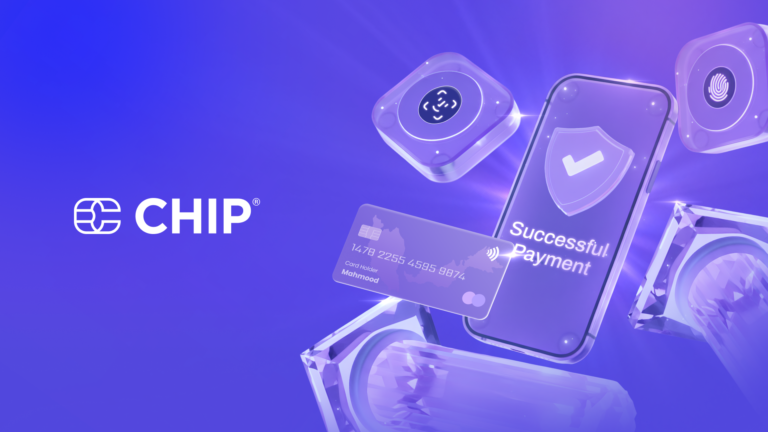In an increasingly unpredictable world, businesses of all sizes face a wide range of risks that can threaten their stability, profitability, and long-term success. From economic downturns and cyberattacks to regulatory changes and operational disruptions, the ability to anticipate and address risks has become a fundamental part of running any organization. Risk management tools are the foundation of a strong risk strategy. They help organizations identify, analyse, prioritize, monitor, and mitigate potential threats in a structured and measurable way. By using the right mix of traditional frameworks, modern digital platforms, and AI-driven technologies, businesses can protect their assets, maintain compliance, and adapt to changing environments. This guide will explore what risk management tools are, the most effective options available today, how CHIP integrates these tools into its platform for businesses, and best practices for implementing them successfully.
Understanding Risk Management Tools
Risk management tools are systems, processes, or applications designed to manage risks in a consistent and efficient way. They can be manual, such as spreadsheets and checklists, or advanced, such as AI-powered monitoring software and integrated financial platforms.
Some common categories of risk management tools include:
- Risk Management Frameworks like ISO 31000 or the Risk Management Framework (RMF)
- Risk Registers to track and document all known risks
- Risk Matrices to visualize and prioritize risks by likelihood and impact
- Risk Breakdown Structures (RBS) for categorizing risks hierarchically
- Advanced Cybersecurity Platforms for real-time monitoring
- AI-driven Predictive Analytics for detecting emerging threats
While these tools can operate individually, businesses achieve the greatest benefit when they are integrated into a unified, organization-wide strategy.
Core Risk Management Frameworks
ISO 31000
ISO 31000 is one of the most widely recognized international standards for risk management. It provides principles, a framework, and a process for managing risk, applicable to any organization regardless of size, industry, or sector.
The key principles of ISO 31000 include:
- Risk management should be integrated into all organizational activities
- It should be structured, comprehensive, and customized to the organization’s needs
- Decision-making should be informed by risk analysis
- Risk management should involve continuous monitoring and improvement
Businesses using ISO 31000 benefit from having a common language for discussing risks, ensuring consistency across departments and projects.
Risk Management Framework (RMF)
The Risk Management Framework (RMF) is another structured approach to handling risks, especially in industries like finance, technology, and government.
The RMF process generally follows these steps:
- Risk Identification — Recognizing potential risks before they occur
- Risk Analysis and Measurement — Determining the likelihood and potential impact of each risk
- Mitigation Strategy Development — Creating actions to reduce or eliminate risks
- Implementation of Controls — Applying the strategies and monitoring their effectiveness
- Ongoing Review and Adjustment — Continuously improving the risk strategy as conditions change
The RMF is particularly valuable because it provides a repeatable process that can be applied to any type of risk, from financial instability to cybersecurity vulnerabilities.
Practical Tools for Risk Assessment
1. Risk Register
A risk register is a centralized document that lists all identified risks along with their key details, such as:
- A description of the risk
- The likelihood of it occurring
- The potential impact on the business
- The person or department responsible for managing it
- Planned mitigation or contingency actions
By keeping this information in one place, managers can track the status of risks, prioritize actions, and ensure accountability across the organization.
2. Risk Matrix
A risk matrix is a visual tool that helps organizations quickly understand which risks require urgent attention. It typically plots likelihood on one axis and severity on the other, categorizing risks into low, medium, or high priority. This approach is simple yet effective for fast decision-making, especially in project management and operations.
3. Risk Breakdown Structure (RBS)
The RBS takes risk analysis a step further by organizing risks into a hierarchical chart. At the highest level, risks might be categorized as operational, financial, or strategic. Each of these is then broken down into subcategories, and then into specific risk events. This structure makes it easier to see patterns, identify root causes, and assign responsibility.
4. Advanced Cybersecurity and AI-Driven Solutions
The rise of digital business has brought with it new risks, especially in cybersecurity and data privacy. As a result, many organizations are turning to technology-driven solutions for real-time monitoring and prevention.
5. Continuous Exposure Management (CEM)
CEM platforms provide a complete, ongoing view of an organization’s cybersecurity vulnerabilities. They identify potential attack paths, rank them by risk level, and suggest mitigation steps. These systems can integrate with security tools like SIEM (Security Information and Event Management) and SOAR (Security Orchestration, Automation, and Response) to automate responses.
6. AI and Predictive Risk Detection
Artificial Intelligence (AI) is transforming the way organizations detect and manage risk. Examples include:
- AI-driven fraud detection for payment systems, identifying unusual spending patterns in real time
- Natural Language Processing (NLP) tools that scan emails, contracts, and reports for early signs of compliance or legal risks
- Machine learning credit models that predict the likelihood of loan defaults before they occur
By analysing large amounts of data quickly, AI tools can uncover risks that traditional methods might miss.
CHIP’s Risk Management Capabilities
CHIP is a financial technology platform designed for businesses, offering solutions that combine payments, expense tracking, compliance, and cash management with built-in risk control features.
1. Compliance and Fraud Controls
CHIP’s compliance tools help businesses ensure they meet financial regulations while protecting against fraud. Transactions are monitored in real time, with alerts for suspicious activities. This reduces the risk of financial losses and helps businesses stay compliant with standards such as PCI-DSS for payment security.
2. Expense Management with CHIP Expense
The CHIP Expense module gives organizations greater control over their spending. Features include:
- Automated tracking of expenses
- Receipt capture and digital record keeping
- Approval workflows to prevent unauthorized spending
- Fraud prevention through duplicate detection and vendor restrictions
- Budget alerts to avoid overspending
These features not only save time but also reduce the risk of financial mismanagement.
3. Integrated Financial and Risk Oversight
What sets CHIP apart is its integrated approach. By combining payment collection, expense management, compliance, and treasury functions, the platform gives businesses a single view of their financial health and associated risks. This centralization simplifies monitoring, reporting, and decision-making.
Best Practices for Using Risk Management Tools
- Customize Your Framework — Use ISO or RMF as a base but adapt them to your industry and company culture.
- Keep a Living Risk Register — Update it regularly as new risks emerge and old risks are resolved.
- Use Both Qualitative and Quantitative Methods — Combine the simplicity of risk matrices with data-driven scoring for a more accurate picture.
- Adopt Real-Time Monitoring — Especially in areas like finance and cybersecurity, where threats evolve rapidly.
- Leverage AI for Early Detection — Invest in tools that can identify patterns and anomalies before they cause damage.
- Integrate Financial and Risk Systems — Platforms like CHIP save time and reduce the risk of oversight errors.
- Review and Improve — Conduct periodic audits to ensure your risk management tools remain effective.
Conclusion
Risk management is no longer a static checklist completed once a year. It is an ongoing, dynamic process that requires the right mix of tools, technology, and strategic thinking. From traditional frameworks like ISO to modern AI-driven detection systems, today’s businesses have more options than ever to safeguard their operations. Platforms such as CHIP make it easier for businesses, especially SMEs, to combine financial management with risk oversight. By embedding compliance, fraud detection, and expense controls into a single platform, CHIP helps organizations stay ahead of threats while maintaining operational efficiency. In a business landscape defined by rapid change and constant challenges, the organizations that thrive are the ones that view risk management not as a burden but as a competitive advantage. With the right tools in place, businesses can navigate uncertainty with confidence, protect their assets, and position themselves for sustainable growth.




